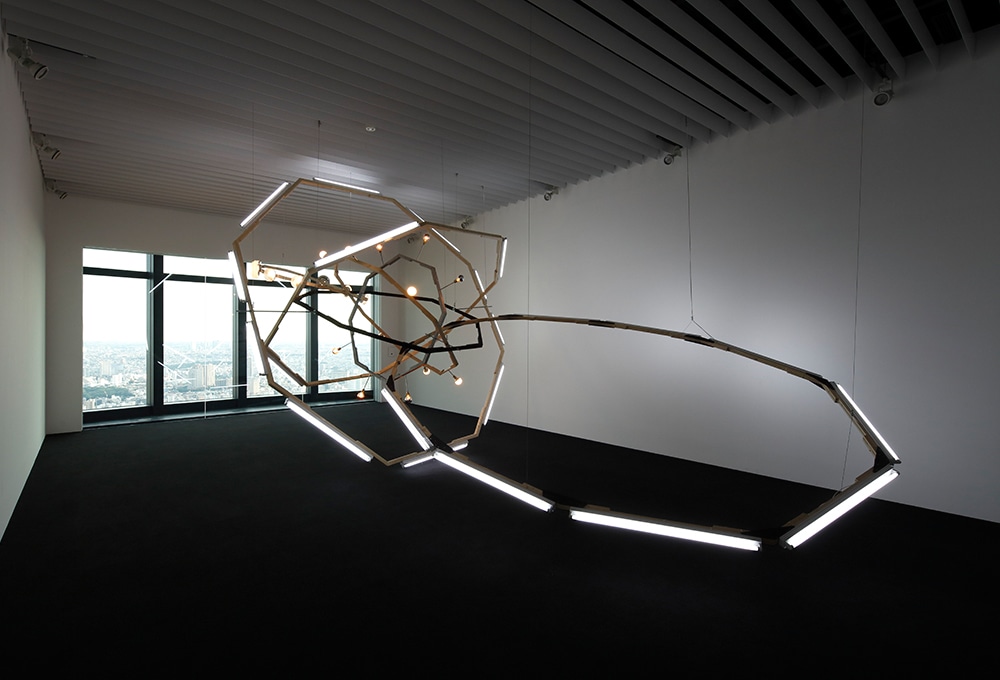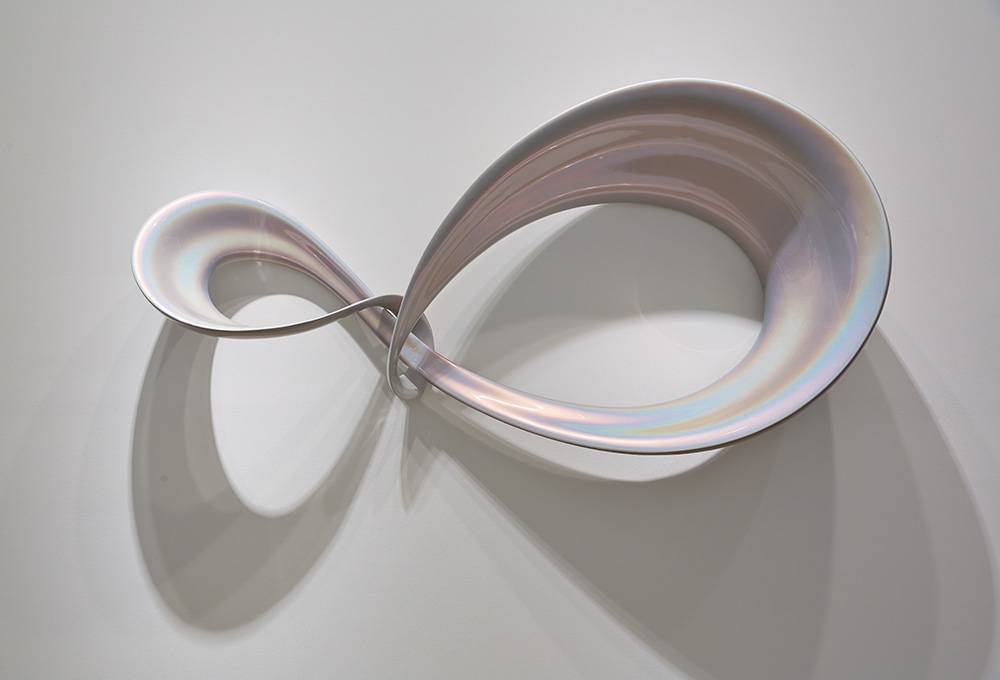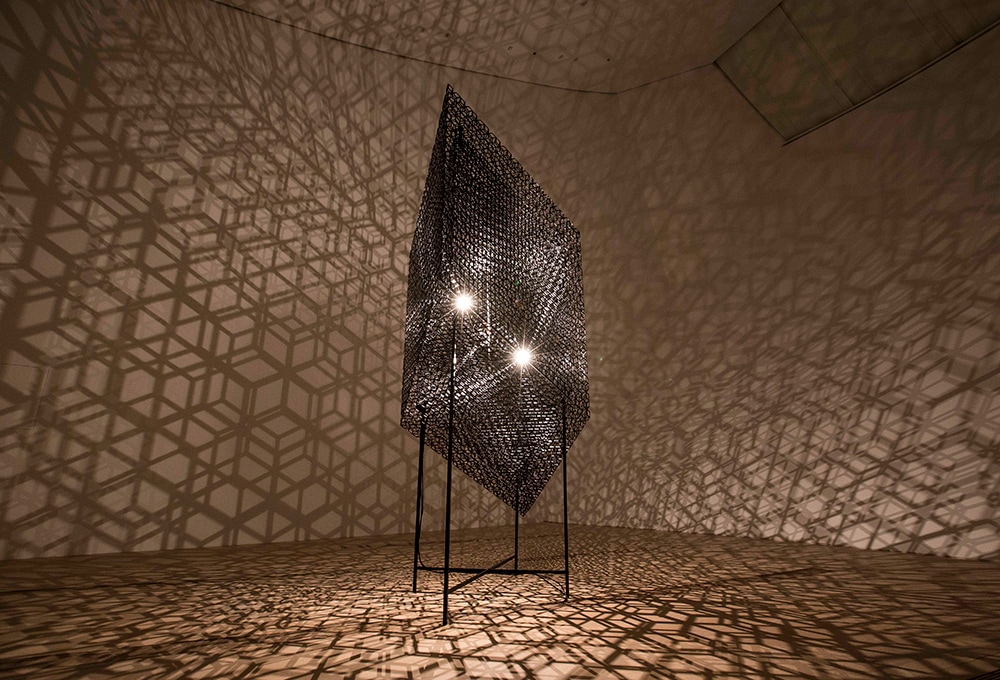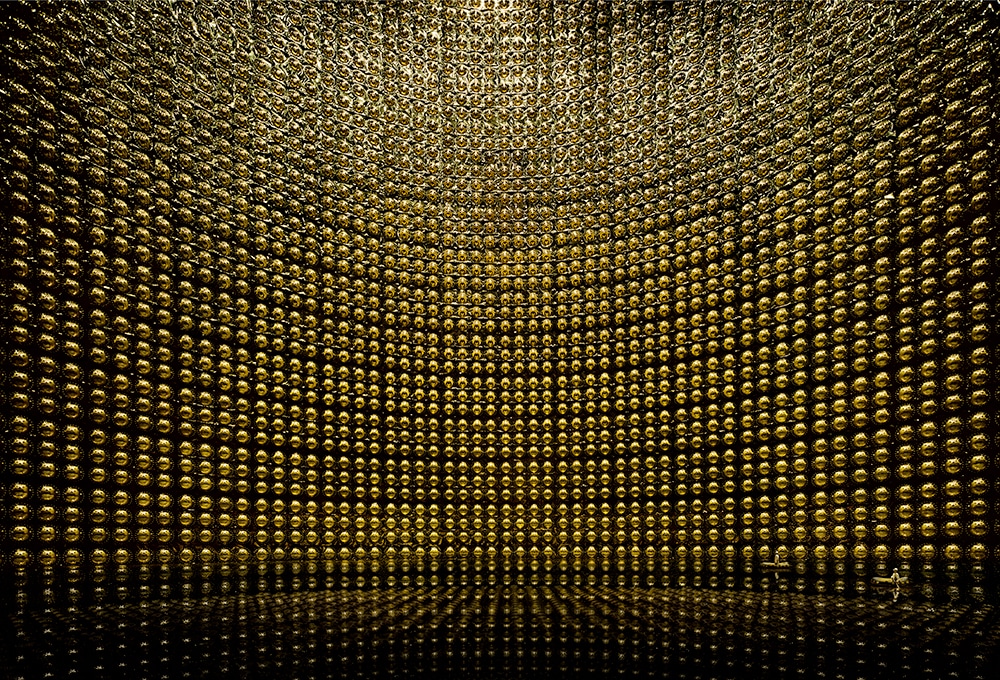In the second part of the exhibition, new thinking about the universe is represented through the work of contemporary artists. Thanks to extraordinary advances in technology, radical new theories, and vast international science endeavours, we are now living through a golden age of discovery in astronomy. Our understanding of the universe has expanded exponentially with scientists beginning to comprehend the immense scale of our universe and its origins. Yet despite this progress in our scientific understanding, much is still unknown. Scientists now believe that 95% of the universe is comprised of mysterious substances and forces, called dark matter and dark energy, which defy current explanation.
In this section of the exhibition, enigmatic cosmological phenomena such as black holes, dark matter and the ekpyrotic universe are contemplated by Björn Dahlem, Conrad Shawcross, Mariko Mori and others. Three of the world’s leading contemporary photographers, Andreas Gursky, Trevor Paglen and Wolfgang Tillmans, show stunning depictions of cutting- edge new instruments designed to observe the universe. And artists such as Yukinori Maeda and Kisho Mwkaiyama explore alternative ideas about the cosmos, including concepts rooted in Eastern philosophy.
This section includes artworks by:
|
|

Black Hole (M-Spheres)
Björn Dahlem | 2016
Wood, steel, fluorescents, light bulbs, stain
Courtesy: Guido W. Baudach Gallery, Berlin and Hiromi Yoshii Gallery, Tokyo
Installation view at the Mori Art Museum, Tokyo, 2016
Photography: Kioku Keizo
Photo Courtesy: Mori Art Museum
Black Hole (M-Spheres) is a large installation hung in mid-air in the centre of the gallery, comprised of seven circular structures made of wood and neon tubes. It is an interpretation of a galaxy revolving around a supermassive black hole. Black holes are objects of extreme density, with such strong gravitational effects that nothing - not even particles or light - can escape from inside them. Dahlem regards the black hole, cosmic space highly compressed by gravity, as the ultimate sculpture.


Ekpyrotic String II
Mariko Mori | 2014
Fiberglass, paint
Collection of the artist
Courtesy: Sean Kelly, New York and SCAI THE BATHHOUSE, Tokyo
Photo: Jason Wyche, New York
Photo courtesy: Sean Kelly, New York and SCAI THE BATHHOUSE, Tokyo
This artwork, structured as a Möbius form, references an alternative theory of cosmology, which posits that the universe did not begin from one singular Big Bang. The Ekpyrotic Universe theory suggests that the universe is actually cyclical in nature, and our own universe was born out of the death of a previous universe. This theory has poetic parallels with Buddhist idea of reincarnation, suggesting that there is no such thing as death when it comes to cosmic energy.

Slow Arc Inside a Cube VIII
Conrad Shawcross | 2017
Powder coated steel, aluminium, light, mechanical system
Edition of 3 + 2 Aps
Commissioned by ArtScience Museum
British artist, Conrad Shawcross is known for his kinetic sculptures inspired by science.
Made especially for this exhibition, this artwork poetically enables us to experience the invisible. A moving light within a metal cage projects mesmerising geometric shadows onto the walls of the gallery. The work’s origins and inspiration come from a quotation the artist came across during a residency at the Science Museum London in 2007. The late scientist Dorothy Hodgkin, whom pioneered crystal radiography in the 1950’s, likened the process she developed to trying to work out the structure of a tree but from seeing only its shadow. This calls to mind the process of how astronomers work out the structure of invisible celestial phenomena, such as dark matter. The process of ‘gravitational lensing’, is much like crystal radiography, in that it gives astronomers a tool to detect invisible dark matter, by looking only at the gravitational effect it has on ordinary matter and light.


Kamiokande
Andreas Gursky | 2007
Print on PVC
Collection of the artist
Courtesy: Sprüth Magers Berlin London
ⓒ Andreas Gursky/ SACK, Seoul 2017
Photo courtesy: Sprüth Magers Berlin London
This photograph depicts the Super-Kamiokande observatory in Japan. It is the world’s largest underground neutrino detector and one of the most important instruments used in the infant branch of astrophysics, known as neutrino astronomy. It was designed to search for cosmic neutrinos, which are amongst the most mysterious of the fundamental particles in physics. Once properly understood, cosmic neutrinos may help us better understand the origins of matter in the early universe. As depicted by Gursky, Super-Kamiokande shines with a golden light, like a shrine in ancient mythology.
